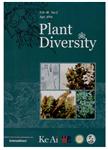New Developments in Plant Conservation and the Relevance of Ethnobotany
New Developments in Plant Conservation and the Relevance of Ethnobotany作者机构:Kunming Institute of BotanyChinese Academy of Sciences
出 版 物:《植物分类与资源学报》 (Plant Diversity)
年 卷 期:2013年第35卷第4期
页 面:424-430页
基 金:financed by grants to Plantlife International from the Allachy Trust the Rufford Maurice Laing Foundation the Gurney Charitable Trust the Tanner Trust and Dr William Hamilton
摘 要:There is only one cover of plants on Earth,so all plant-related aspects of conservation should be consid- ered in deciding how the land and the plants on it should be managed for conservation purposes. A three-fold classification of the benefits to be derived from ecosystem-based plant conservation ( EBPC) is suggested: conservation of plant species,the sustainable use of plant resources and the delivery of ecosystem services. EBPC is a place-centred approach which,in principle,can be pursued anywhere. Ethnobotanical research can help reveal realities about relationships between local people and plants,thus providing information useful for advancing plant conservation. Applied ethnobotany involves ethnobotanists working in a participatory way with local people,both parties contributing to the identification and resolution of conservation issues relating to plants. This type of research helps ensure that priority issues from the local perspective are addressed,thus making it more likely that local people will be committed to implementing solutions found. Both knowledge and values associated with local communities,and knowledge and methodologies associated with science are brought together in the conservation cause.



